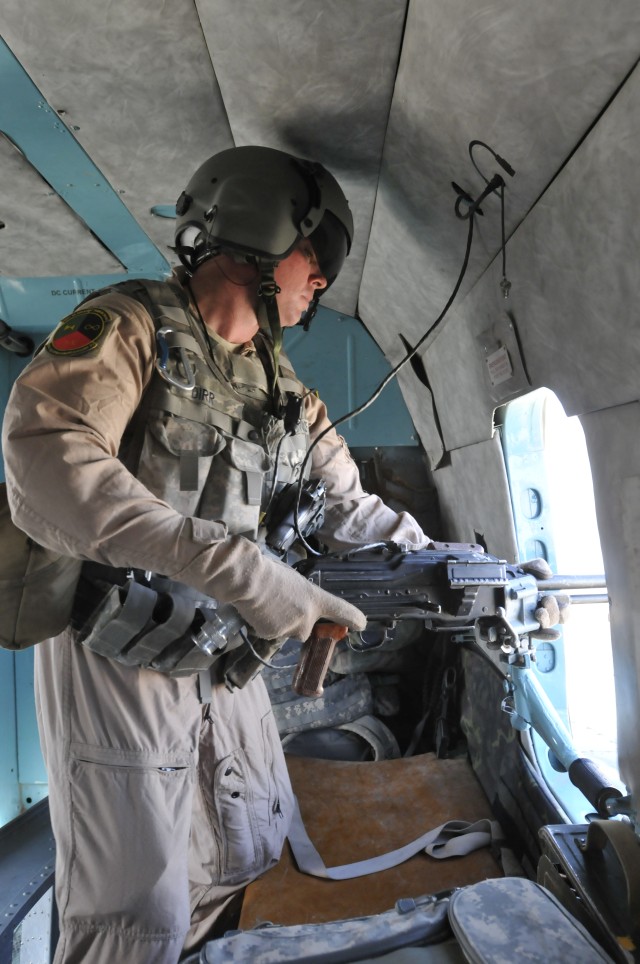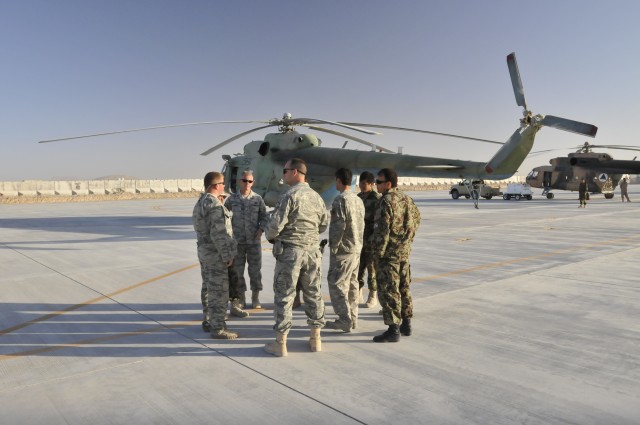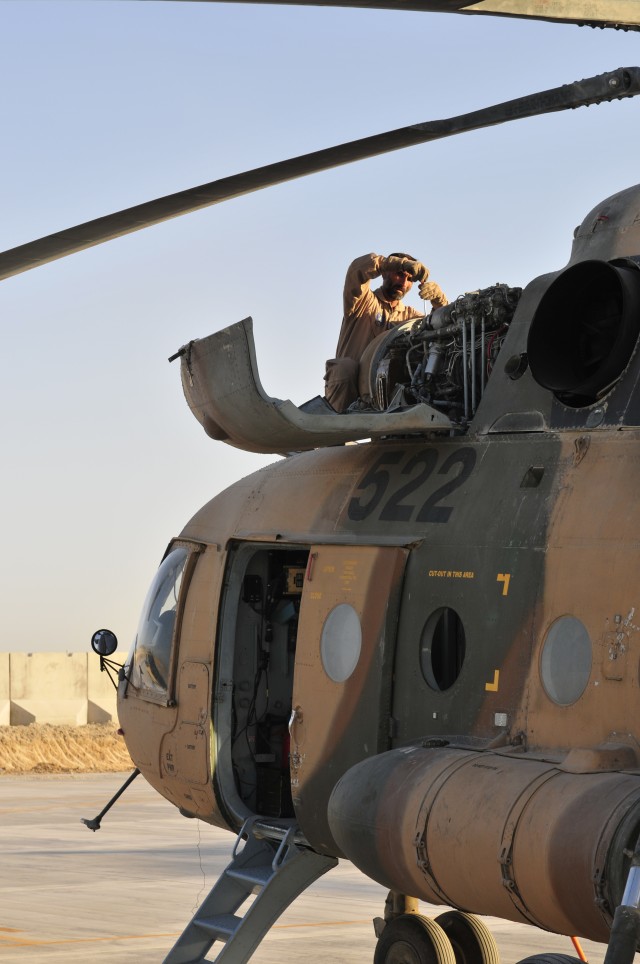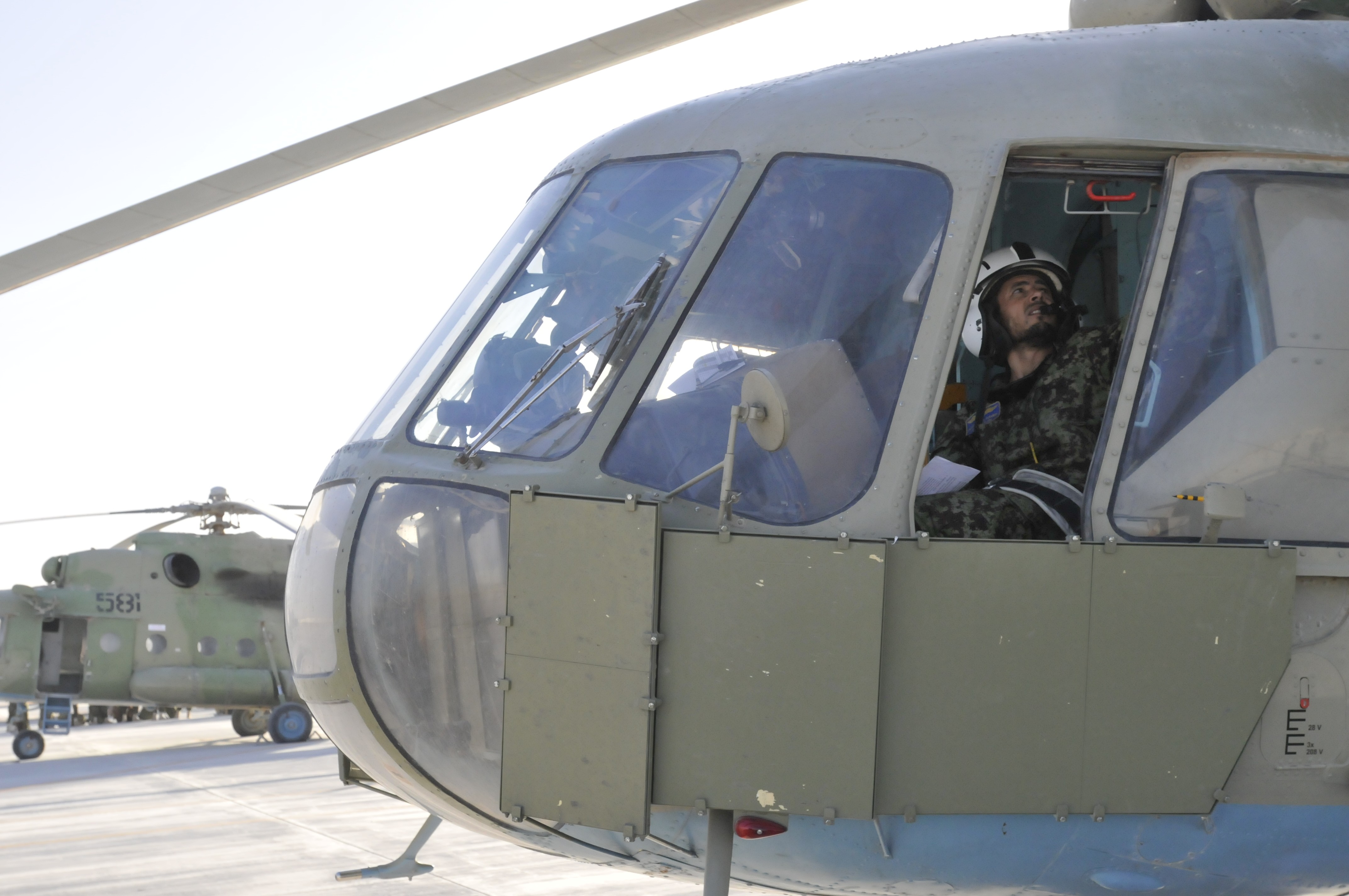KANDAHAR AIRFIELD, Afghanistan - Afghan and American pilots flew two MI-17 transport helicopters on a routine troop movement mission to several forward operating bases throughout the southern part of Afghanistan Sept. 22.
With few reliable roads for military forces to use, air travel is a vital mode of transportation in Afghanistan.
The goal of the Afghan Air Corps, who are currently trained by the [International Security Assistance Force] Coalition Forces, is for it to defend its own skies and serve the Afghan National Army. As of July 2010, the number of ANA personnel reached 134,000 and is expected to increase in the future.
A pilot from the Afghanistan National Army Air Corps, 205th Corps, who requested to remain anonymous, said he has 18 years of flying experience.
"Today's mission is to transport a group of Afghan soldiers and their gear from here to a FOB in the Helmand Province, after that, transport a group of Afghan soldiers from a FOB in Nimroz Province to a FOB in Helmand Province," he said.
The cockpit personnel for the mission included two Afghan pilots and one American pilot.
U.S. Air Force Capt. Clell Knight, a helicopter pilot for the 442nd Air Expeditionary Advisory Squadron, was seated between the Afghan pilot and the co-pilot.
"We are trying to put all the skills together, where (the pilot) is a capable mission commander not only thinking about himself but his other wingmen," said Knight.
Due to the elements, there are never-ending maintenance issues. The MI-17s are regularly serviced every 50 flight hours.
Air Force Maj. Christopher Tooman, the 442nd AEAS commander, is in charge of the coalition forces that advise and assist the ANA maintenance teams.
"We help the ANA maintain the helicopters," Tooman said. "We try to mirror a U.S. Air Force style wing where we have a mission support squadron, a maintenance squadron and an operations squadron."
Tooman's squadron deals with any maintenance issues the helicopters may have.
"We help them develop a Western style maintenance practice from everything with forms documentation, to inspection practices, to helping them develop better ways to maintain their helicopters."
"The (helicopters) we have here were built in the late 80s, all re-manufactured or overhauled in Czechoslovakia and the Ukraine," said Tooman. "On average we fly six days a week, on the maintenance side, [the Afghan pilots] are definitely developing into a very professional force."
In the future, Tooman sees the Kandahar air wing having permanently assigned aircraft. As of right now every helicopter goes through Kabul as inspections come due.
Tooman said they are limited on the inspection capability [on KAF] based on personnel and equipment.
"We are starting to fill that, to the point where we will be able to do all the inspections here [on KAF]. Once we can do that, the aircraft will be permanently assigned to Kandahar, which gives the Kandahar air wing ownership to the aircraft. That will make the ANA much more self-sustainable as far as having their own capability to maintain and fly their helicopters."
Tooman said that the missions vary from day to day.
"We fly some medical moves, we fly human remains moves, personnel moves to move troops here to there like today, and we also fly a lot of cargo like rice, firewood, that kind of thing."
The flight crew consists of a pilot, a co-pilot, a flight engineer and a crew chief said Tooman.
"When the Americans fly [the helicopters] we have an American medic and an American crew chief on board as well, to give us a little more confidence as we get into some of the more diceyer areas [of Afghanistan]," he said.//
The MI-17 transport helicopter is used by many countries all over the world, including North Korea and Iran. The Soviet Union specifically designed the helicopters for use in the Soviet war in Afghanistan. It can travel at 250km/h (155mp/h) and can carry up to 30 personnel. It is capable of single-engine flight in the event of loss of power, if one engine fails; the other engine's output is automatically increased to allow continued flight.
Today it is the backbone of the flourishing Afghan air corps.
U.S. Air Force Tech. Sgt. Frank Dirr, crew chief with the 442nd AEAS, said the MI-17 is a very dependable aircraft. He pointed out that the MI-17 engine has intakes that have deflectors that separate solid particles in the air [dust or sand]. The MI-17 is well-suited for navigating mountains and Afghanistan's sandy desert terrain.
Dirr said the missions he flies on involve taking supplies to different forward operating bases and sometimes transporting human remains throughout Afghanistan. Missions don't go without some element of danger.
"We generally try to keep [the helicopters] flying high enough to avoid enemy fire," said Dirr. "When you are flying into a FOB you are low, so every now and then you take some rounds."
Dirr mentioned one incident when he flew into Mazar-i-Sharif, "A couple of guys were hit in the leg, from rounds coming through the floor."
The ultimate goal is for the Afghan Air Corps, currently trained by the Coalition Forces, to defend its own skies and serve the ANA.
This weather for this particular day started with a cloudless sky. Throughout the day's many stops, the two MI-17s re-fueled twice. The air at Zaranj, in the Nimroz Province was very sandy but nevertheless the mission went without any issues.








Social Sharing